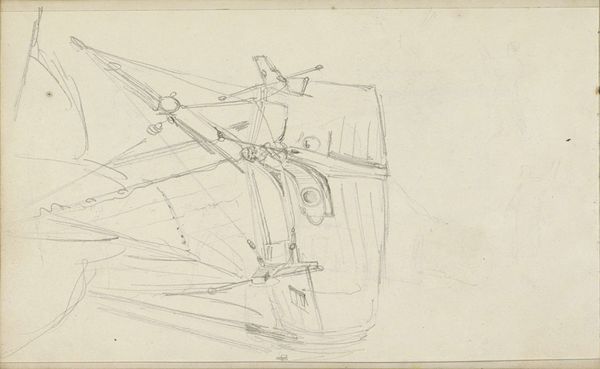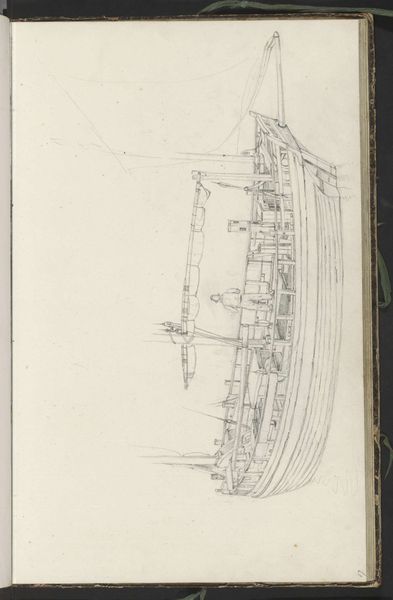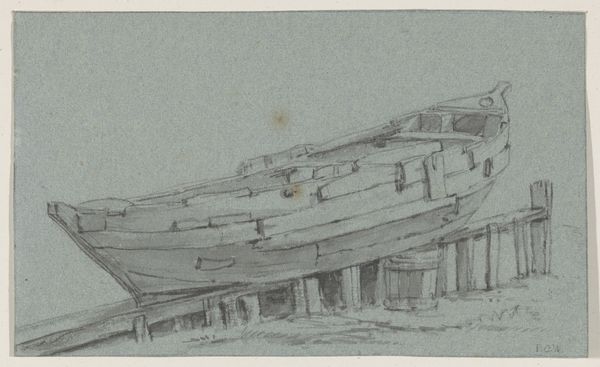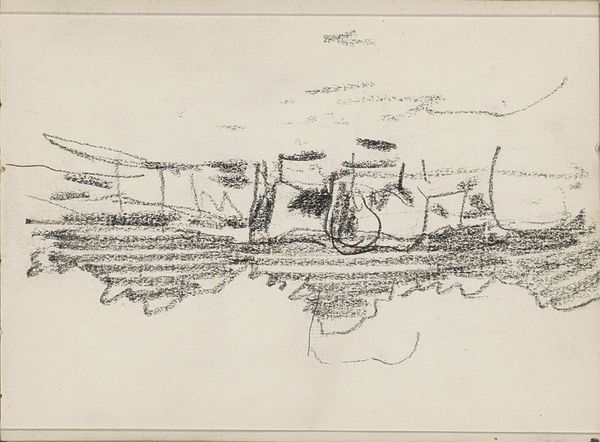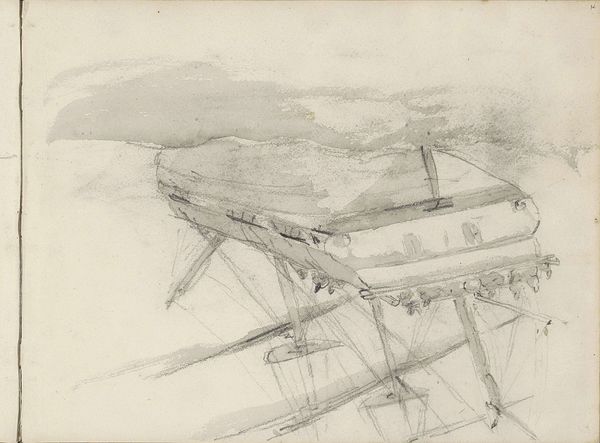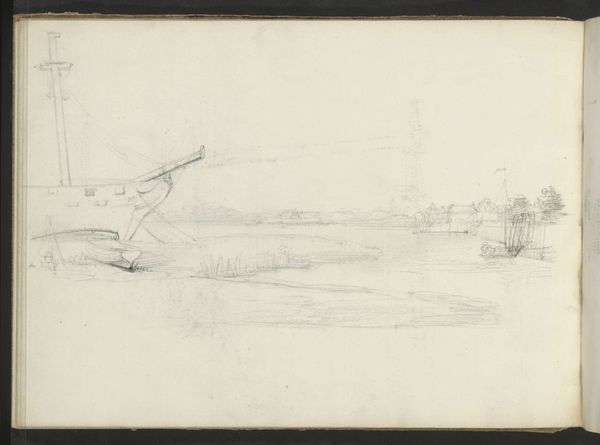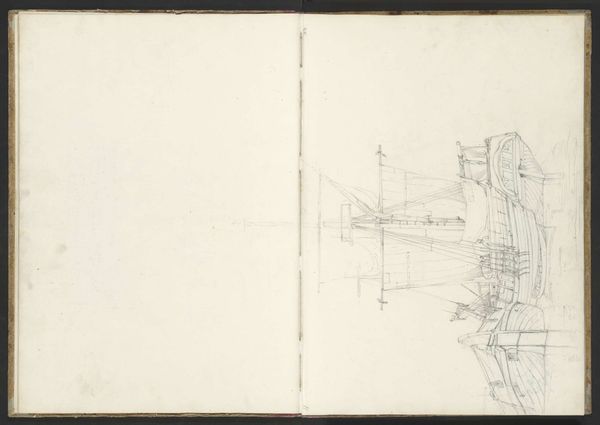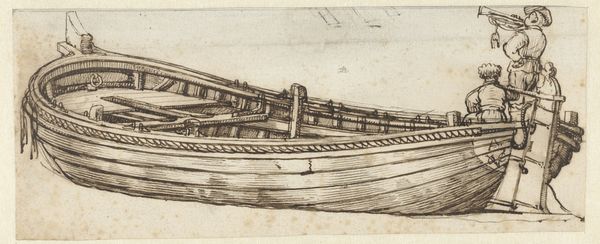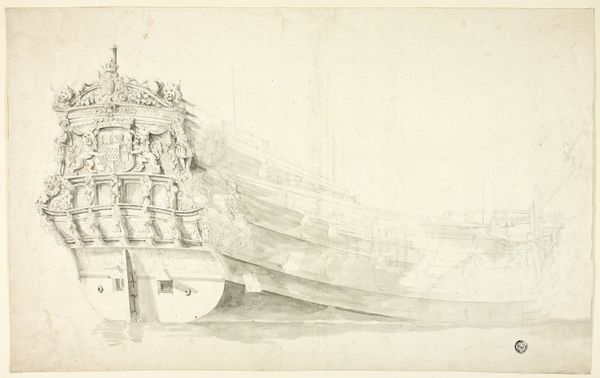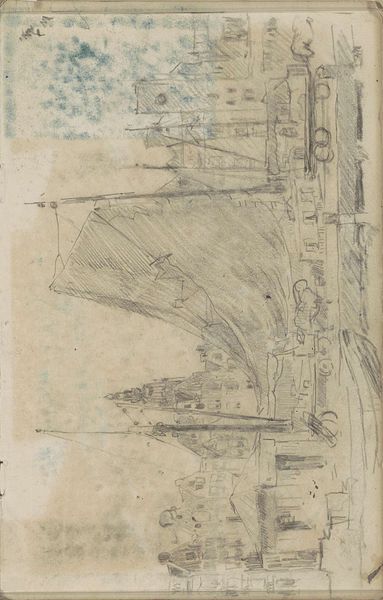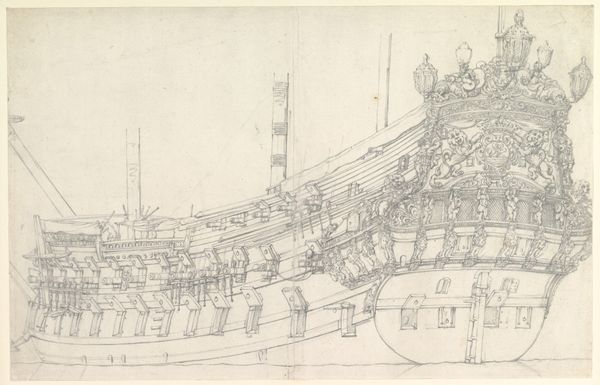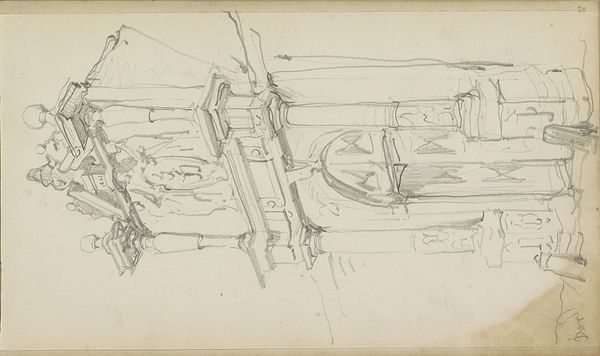
drawing, pencil
#
drawing
#
quirky sketch
#
pen sketch
#
landscape
#
personal sketchbook
#
idea generation sketch
#
sketchwork
#
pen-ink sketch
#
pencil
#
sketchbook drawing
#
storyboard and sketchbook work
#
sketchbook art
#
realism
#
initial sketch
Dimensions: height 147 mm, width 189 mm
Copyright: Rijks Museum: Open Domain
Editor: This sketch, “Romp van een zeilschip, dat opgeknapt wordt” – or “Hull of a Sailing Ship Being Refurbished” – by Charles Rochussen, likely from between 1824 and 1894, captures a ship in dry dock. The pencil work gives it a raw, almost industrial feel, but it seems unfinished to my eye. How do you interpret the composition? Curator: Consider how the artist uses line and form. The hull dominates, but the eye is drawn to the ladder bisecting the composition. Observe the texture implied through the varied pressure of the pencil. Do you perceive how this layering creates depth? Editor: Yes, the varying pencil strokes definitely suggest the roughness of the ship's hull, almost like a blueprint coming to life. Curator: Precisely. It's an exploration of form through tonal variation, without relying on color or elaborate detail. It’s less about depicting a scene and more about rendering shape and structure through fundamental artistic means. Notice how negative space around the subject delineates it. Editor: That makes sense. So, by focusing on the bare bones of representation—line, form, and tone—Rochussen really distills the essence of the ship. Curator: Precisely. This piece becomes about the *idea* of a ship, more than its literal depiction. I invite you to think of it not as an unfinished sketch, but a study of pure form. Editor: That’s a completely new way of looking at it for me. I came in thinking it was incomplete, but it is more like a study focusing on fundamentals. Curator: Art challenges perception, prompting a richer experience through closer inspection of these visual elements. We discover intentionality, even within perceived simplicity.
Comments
No comments
Be the first to comment and join the conversation on the ultimate creative platform.
